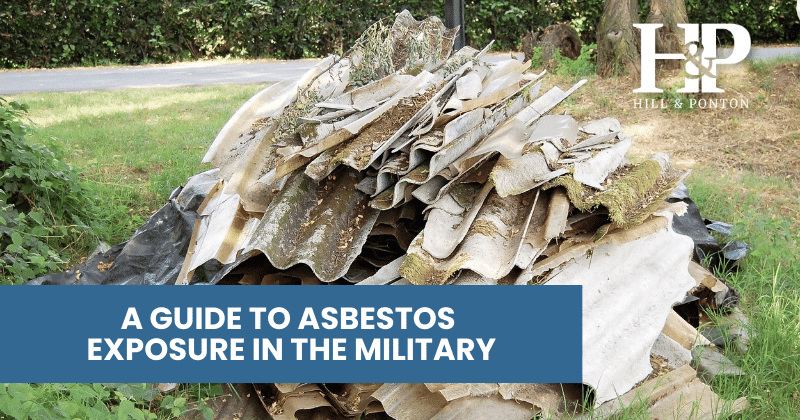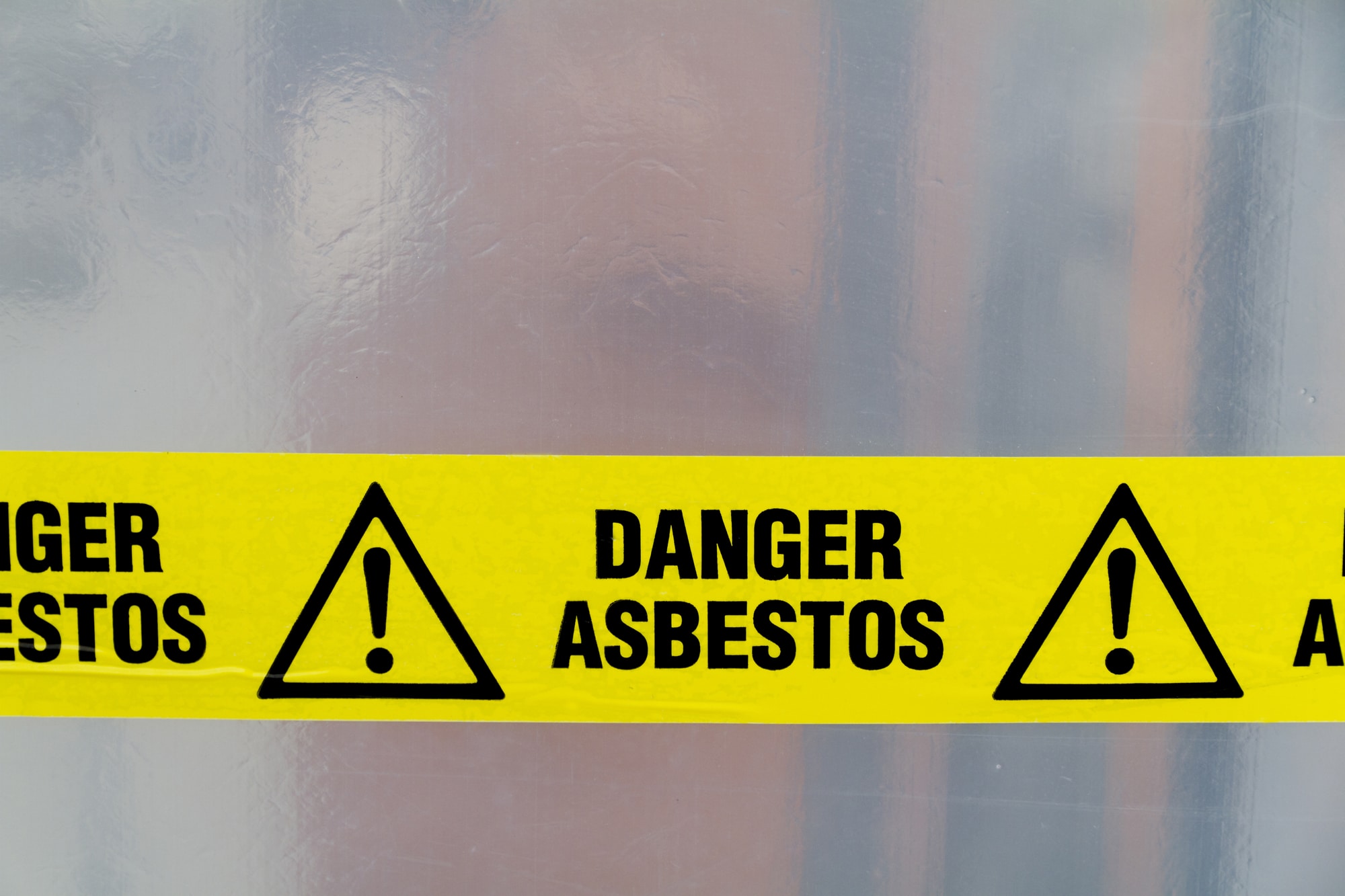Many veterans were exposed to asbestos during their military service. Asbestos is a dangerous material that can cause long-term health problems, including lung cancer, asbestosis, and mesothelioma. If you’re a veteran dealing with an asbestos-related condition, or if you’re a family member of one, this guide explains how to obtain VA disability benefits.
Sources of Asbestos Exposure for Veterans
From the 1930s to the 1980s, asbestos was used widely in military environments. Here’s where veterans might have been exposed:
Military Buildings
- Barracks, Offices, and Mess Halls: Asbestos was present in flooring, insulation, roofing, ceiling tiles, electrical wiring, and siding
- Construction: Veterans involved in construction, renovation, or demolition work were at particularly high risk.
Vehicles and Aircraft
- Automotive Components: Brake pads, clutches, gaskets, and heating systems often contained asbestos.
- Aircraft Construction: Asbestos was incorporated into the manufacturing of bombers and fighter planes.
Ships and Naval Vessels
- Navy Ships: Navy veterans faced exceptionally high risks, as asbestos was common in engine rooms, boiler rooms, and even sleeping areas.
- Coast Guard Cutters: According to Coast Guard records, cutters constructed prior to 1991 are known to have asbestos materials, including asbestos-containing thermal insulating material and floor tiles.
Asbestos Exposure by Military Branch and Occupation
The Army
Asbestos exposure was the highest for soldiers between WWII and the 1980’s. This is because the use of asbestos in the Army increased as the branch expanded. Asbestos was used in:
- Barracks
- Flooring
- Ceiling
- Electrical wiring
- Roofing
- Siding
- Insulation
- Vehicles
- Heating systems
- Brake pads
- Clutches
- Gaskets
- Aircraft (WWII era)
- Bombers
- Fighter planes
- Transportation aircraft
Asbestos Exposure and MOS
Servicemen who served in the Army may have had a higher chance of being exposed to asbestos if their duties were related to:
- Pipefitting
- Mining
- Milling
- Shipyard work
- Manufacture and servicing of friction products such as clutch facings and braking linings
- Insulation work
- Demolition of old buildings
- Carpentry and construction
- Manufacture and installation of products such as roofing and flooring materials, asbestos cement sheets, pipe products and military equipment
More recently, soldiers who served in Iraq could have been exposed due to Iraq and other countries in the Middle East importing large amounts of asbestos for construction.
The Air Force
Asbestos was prevalent in aircraft because of its insulating and fire resistant properties. The material was used extensively in planes:
- Brakes
- Cockpit heating system
- Heat shields for engines
- Torque valves
- Gaskets
- Electrical wiring
- Insulation for cargo bays
- Manufacture and installation of products such as roofing and flooring materials, asbestos cement sheets, pipe products and military equipment
Aircraft mechanics are the MOS with the highest risk of asbestos exposure in the Air Force.
The Navy
Navy veterans run the highest risk of asbestos-related illnesses, due to the enormous amount of uses for asbestos on ships. Even after the Navy finally stopped filling Navy vessels with asbestos, the vessels that did contain asbestos remained in use for many years after production stopped. Asbestos could be found in:
- Engine and boiler rooms
- Navigation and operating areas
- Sleeping quarters
- Storage rooms
- Mess halls and common areas
- Hull and structural components
- Mechanical systems
Any construction, demolition, repair or renovation of ships (or naval buildings on land) exposed Navy service members to asbestos. Sailors on board warships often slept in bunks below asbestos-covered pipes. As ships aged, the asbestos fibers would become brittle, and any disturbance would make the fibers airborne.
Personnel who worked below deck were at the highest risk because of where the most heat-resistant asbestos was used—in the engine and boiler rooms.
MOS at Risk for Asbestos Exposure
- Boiler Technician
- Pipefitter/Shipfitter
- Hull Technician / Welder
- Machinist Mate
- Shipbuilder
- Electricians Mate
- Steelworker
- Seabees
- Damage Controlman
- Machinery Repairman
- Gunners Mate
- Boatswains Mate
- Aviation Machinist Mate
- Aviation Boatswains Mate
- Storekeepers
- Firemen
The Marine Corps
Because the Marine Corps are present on ships, aircraft and armored vehicles, they have been exposed to asbestos as well. In fact, Marines had the same risks of asbestos exposure as Navy sailors. Prior to 1998, entire detachments of Marines were deployed on Navy vessels. Asbestos exposure occurred in:
- Barracks/sleeping quarters
- Shipyards
- Military vehicles and other transportation
- Ships
- Smaller Navy vessels

Health Problems Associated with Exposure to Asbestos
Asbestos exposure mainly affects the lungs and chest. Symptoms may take years to appear, but the health effects are serious:
- Respiratory Symptoms: Coughing, chest pain, and trouble breathing.
- Chronic Conditions: Asbestos can lead to lung-scarring diseases like pleural plaques and asbestosis.
- Severe Diseases: Exposure is linked to lung cancer and mesothelioma (a rare cancer affecting the lung or abdominal lining).
VA Benefits for Mesothelioma
Mesothelioma and asbestos-related lung cancer are among the most serious asbestos-related diseases. If you have either condition, you may qualify for a 100% VA disability rating, which is the highest monthly benefit. Learn more about service connecting cancer in our guide.
How Can I Get VA Benefits for Asbestos Exposure?
Asbestos exposure is not automatically assumed by the VA, so you’ll have to prove the link between your condition and your service. Here’s what’s needed:
- Medical Diagnosis: Records showing a health issue caused by asbestos exposure.
- Proof of Exposure: Service records or documentation describing how your job put you at risk. Include information about your military occupation specialty (MOS). If you served on ships, provide the names and dates of service (particularly Coast Guard cutters constructed prior to 1991). Detail maintenance procedures you performed that may have led to exceptional exposure.
- Nexus Statement: A doctor’s statement linking your asbestos exposure to your military service.
Exceptional Exposures
Some veterans experienced “exceptional exposures” during maintenance procedures like:
- Tearing up entire floor surfaces of asbestos-containing floor tiles
- Torching or sanding surfaces painted with lead-containing paint without personal protective equipment
Documenting these specific incidents can strengthen your claim significantly.
Does the PACT Act Cover Asbestos Exposure?
The PACT Act currently does not cover asbestos exposure as a presumptive condition. This means that veterans still need to provide evidence of exposure and its link to their military duties to qualify for disability compensation.
How to File a VA Claim for an Asbestos-related Condition
If you believe you qualify for VA disability benefits due to asbestos exposure, here’s how to start your claim:
- Gather Documentation: Collect medical records, service records, and asbestos evaluations.
- File Online or By Mail: Submit your claim on the VA’s website or at your local VA office. Use VA Form 21-526EZ for new claims.
- Prepare an Exposure Summary: Include details about your duties and how they led to asbestos exposure.
Required Documentation and Evidence
- Medical Records: Include all diagnoses, treatments, and symptoms related to asbestos exposure.
- Service Records: Show your duties and jobs that likely exposed you to asbestos.
- Nexus Statement: A doctor’s opinion linking your condition to military asbestos exposure.
Consider working with a Veterans Service Officer (VSO) or legal expert experienced in asbestos claims to strengthen your documentation.
How to Make a Strong Claim
Proving asbestos exposure can be tough, especially for veterans in lower-risk roles. Here’s how to address these challenges:
- Provide Clear Descriptions: Describe your duties and work environment in detail.
- Use Buddy Statements: Ask fellow service members who witnessed your exposure to provide supporting statements.
- Search for Records: Look for unit logs or maintenance records mentioning asbestos.
- Get a Medical Opinion: Ask a doctor to connect your symptoms to asbestos exposure, even if it was indirect.
My Claim for Asbestos Exposure Was Denied, What Can I Do?
If your VA claim for asbestos-related health issues was denied, don’t give up. Here’s how to keep moving forward:
- Review the Decision Letter: Carefully read the VA’s decision letter to understand why your claim was denied.
- Gather New Evidence: Collect additional medical records, doctor statements, or documents showing the link between your condition and asbestos exposure.
- File an Appeal: A VSO or a VA attorney can help you appeal the decision and strengthen your case with more evidence.
Did the VA deny your claim for asbestos exposure, or do you feel your rating doesn’t fully recognize the impact on your health? Contact us today — we’re here to help you take the next steps and fight for the benefits you deserve.



